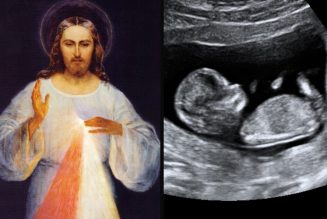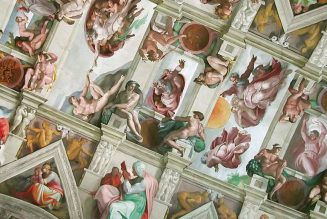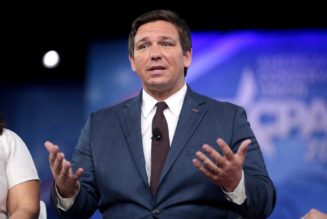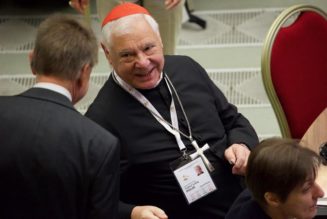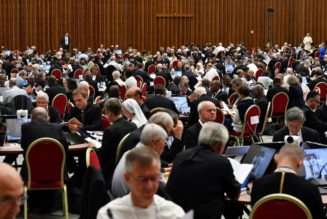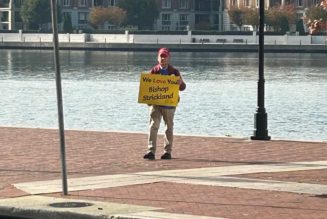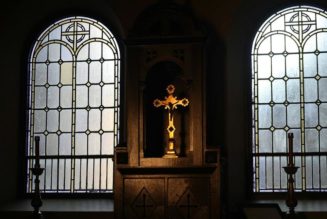By Phil Lawler ( bio – articles – email ) | Jun 11, 2021
The Vatican decision to impose term limits on the leaders of lay associations is not unreasonable on its face. The new policy addresses the problems that have arisen in some lay movements when long-term leaders abused their authority. It should, in theory, provide for the fresh new perspectives that Pope Francis always desires, and guard against the encrustation of power that he fears.
However, the new policy could also conflict with some powerful natural forces: forces of human nature and of ecclesiastical history. Some very successful organizations (within the Church, as in the world at large) are ruled for many years by their founders: inspired by the founder’s charisma and guided by his vision. In many cases that long-term leadership works.
The new Vatican policy, announced today, allows for the Dicastery of Laity, Family, and Life to set aside the rule in special cases. But notice that it is the Vatican office that allows for those exceptions, not the lay association itself. So the Vatican might allow a charismatic founder to stay in a leadership role if the dicastery fully approves of his vision. But that approach certainly does not jibe with the Pope’s oft-stated preference for decentralized leadership in the Church, nor with the impulse to give lay people a greater role in decision-making—including, presumably, in the decisions made about the associations to which they belong. (This is the usual dilemma involved in imposing term limits, isn’t it? The term limits prevent leaders from overstaying their useful terms in office, but they limit the ability of voters to choose the leaders they prefer.)
Moreover, the policy conflicts with what has long been the standard practice at the Vatican—a practice that remains firmly in place despite the Pope’s frequent calls for rotation of leadership. It will be interesting to see how vigorously the dicastery for Laity, Family, and Life enforces the new rule, in light of the way similar rules are routinely ignored within the Roman Curia.
In February 2018, Pope Francis set forth new guidelines for the resignation of Church leaders, saying that Vatican officials as well as diocesan bishops should submit their resignations upon reaching the age of 75. Although he allowed that the Pontiff was not required to accept these resignations, the Pope made it clear that the Vatican officials would be appointed for 5-year terms, which would not be routinely renewed. On paper, then, term limits are already in effect for the Roman Curia.
Now take a look at the top offices of the Curia:
- The Secretary of State, Cardinal Pietro Parolin, is well short of retirement age, at 66. But he has held the same office since 2013: eight years.
- The prefect of the Congregation for Bishops, Cardinal Marc Ouellet, celebrated his 77th birthday this week; thus he is two years beyond the normative retirement age. He has been in the same office since 2010: eleven years.
- The prefect of the Congregation for Clergy, Cardinal Beniamino Stella, is approaching his 80th birthday, and has been in office since 2013. (He remains in place for now although his replacement was named today.)
- The prefect of the Congregation for Catholic Education, Cardinal Giuseppe Versaldi, is 77, and has been in office since 2015.
- The prefect of the Congregation for Religious, Cardinal Joao Braz de Aviz, is “only” 74, but has been in office since 2011.
- The prefect of the Congregation for Eastern Churches, Cardinal Leonardo Sandri, is 77, and has been in office since 13.
- The prefect of the Congregation for the Doctrine of the Faith, Cardinal Luis Ladaria, has only held that office since 2017, so he is well within his 5-year term. But he is 77: beyond retirement age.
Among the prelates who head the traditional major congregations of the Vatican curia, only Cardinal Tagle (Evangelization), Cardinal Semeraro (Causes of Saints), and Archbishop Roche (Divine Worship) are both under 75 years old and serving within their first 5-year term.
Look to the Council of Cardinals—the body that advises the Pope on the organization of the Curia—and the same pattern applies. Cardinal Oscar Maradiaga is 78 and Cardinal Sean O’Malley is 77; both have been on board since 2013. Cardinals Reinhard Marx, Oscar Gracias, and Giuseppe Bertello are younger, but all have been in place for eight years. Cardinal Pietro Parolin joined the Council in 2014.
So a solid majority of the Vatican’s top officials—appointed and retained by the Pope—remain in office despite the fact that their tenure seems to violate the general rules that Pope Francis himself has set in place. Adherence to the norms, it turns out, is not really the norm. Should we expect anything different with the leadership of lay associations?
Sound Off! CatholicCulture.org supporters weigh in.
All comments are moderated. To lighten our editing burden, only current donors are allowed to Sound Off. If you are a current donor, log in to see the comment form; otherwise please support our work, and Sound Off!

Join Our Telegram Group : Salvation & Prosperity



